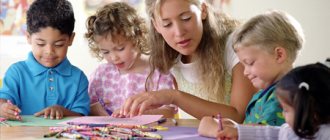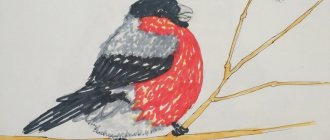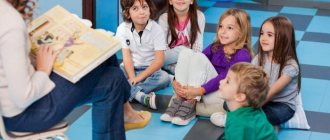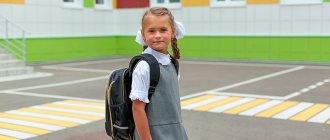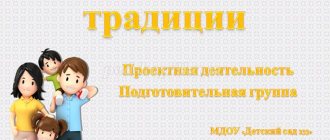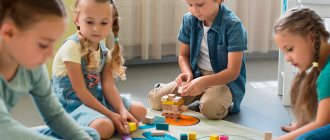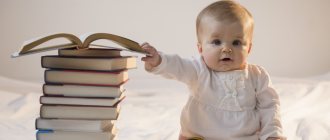What is an individual curriculum
A curriculum is a document that describes in detail what subjects schoolchildren study, how many hours are devoted to studying each subject, in what sequence the training takes place and how it is controlled. The difference between an individual plan and a regular plan is established by the law on education: an individual educational plan (IEP) takes into account the characteristics of a particular student and his learning needs. When developing an IEP, the basic program is adjusted to the student’s capabilities so that he can successfully cope with his studies.
What are the features of IEP
The main task is to provide the child with an education taking into account his characteristics, choosing the optimal level of educational programs for him, the pace and timing of training. With the IEP, it is allowed to change the list of subjects, the depth of their study, and the sequence of studying subjects during the academic year. But there is an important limitation: the procedure for organizing training according to an individual curriculum should not go beyond the federal state educational standards of general education (FSES).
Peculiarities:
- Ability to change the complexity of training. It is allowed to reduce or increase the hourly load. If a subject is taught at a basic level at school, a student in the IUP is allowed to study at an advanced level in that subject. For example, study mathematics in depth at a school with a humanitarian focus. If at school a subject is studied at an in-depth level, the student at the IEP is allowed to be given material at the basic level. For example, in a school with a mathematical bias, study geometry and algebra at a basic level.
- Ability to change the sequence of study. If a school provides instruction in all subjects at once, a student using an individual plan is allowed to study subjects sequentially, in the form of blocks or modules. For example, first study the entire chemistry course, then the entire physics course, then the Russian language course. It is allowed to combine sequential and parallel study, when one or more subjects are taught weekly during the year, and the rest are studied in blocks.
- Ability to change the list of items. It is allowed to add or remove subjects to the curriculum if this does not contradict the Federal State Educational Standard.
Designing a speech therapy lesson in accordance with the requirements of the Federal State Educational Standard for Educational Education
Designing a speech therapy lesson
in accordance with the requirements of the Federal State Educational Standard in preschool educational institutions.
Teacher speech therapist:
Seregina T.G.
.
The specificity of preschool age is such that the achievements of preschool children are determined not by the sum of specific knowledge, abilities and skills, but by a set of personal qualities, including those that ensure the child’s psychological readiness for school.
The Federal State Educational Standard puts at the forefront an individual approach to the child and play, where the intrinsic value of preschool childhood is preserved and where the very nature of the preschooler is preserved. The leading types of children's activities will be: gaming, communicative, motor, cognitive-research, productive, etc.
It should be noted that educational activities are carried out throughout the entire time the child is in the preschool organization.
These are: joint (partnership) activities of the teacher and children:
educational activities in special moments;
organized educational activities;
independent activity of children.
Organized educational activity is the organization of joint activities between a teacher and children:
with one child;
with a subgroup of children;
with a whole group of children.
The choice of the number of children depends on:
age and individual characteristics of children;
type of activity (game, cognitive - research, motor,
productive);
their interest in this activity;
complexity of the material.
But it must be remembered that every child should receive the same
starting opportunities for schooling.
The main feature of the organization of educational activities in preschool educational institutions at the present stage is the departure from educational activities (classes), increasing the status of play as the main activity of preschool children; inclusion in the process of effective forms of work with children: ICT, project activities, gaming, problem-based learning situations as part of the integration of educational areas.
Thus, “class” as a specially organized form of educational
Kindergarten activities are cancelled. The activity should be a specific children's activity that is interesting for children, specially organized by the teacher, implying their activity, business interaction and communication, the accumulation by children of certain information about the world around them, the formation of certain knowledge, skills and abilities. But the learning process remains. Teachers continue to “work” with children. Meanwhile, it is necessary to understand the difference between “old” learning and “new” learning.
If previously organized educational activities were carried out in the form of educational activities, then modern standards suggest teaching children through the organization of children's activities.
When designing corrective classes, the speech therapist must take into account the following important features of modern preschool education, which differ from traditional education:
A child and an adult are both subjects of interaction. They are equal in importance.
Each is equally valuable. Although an adult, of course, is older and more experienced.
The activity of a child is at least no less than the activity of an adult.
The main activities are the so-called children's activities. The goal is the genuine activity (activity) of children, and the development of knowledge, skills and abilities is a side effect of this activity.
The main model of organizing the educational process is the joint activity of an adult and a child.
The main forms of working with children are examination, observations, conversations,
talking, experimenting, research, collecting, reading, doing projects, etc.
Mainly so-called indirect teaching methods are used (with partial use of direct ones).
The motives for learning, carried out as the organization of children's activities, are primarily related to the children's interest in these types of activities.
The main goal of the teacher in the lesson is to form and support the child’s initiative in perceiving new information, searching and processing information, generalizing methods of action, setting an educational task, etc.
So-called free attendance of classes is allowed. Respecting the child, his condition, mood, preferences and interests, the adult is obliged to provide him with the opportunity to choose - to participate or not to participate with other children in a joint business, but at the same time has the right to demand the same respect for the participants in this joint business.
The educational process involves making changes (adjustments) to plans, programs taking into account the needs and interests of children; notes can be used partially to borrow factual material (for example, interesting information about composers, writers, artists and their works), individual methods and techniques, etc. ., but not as a “ready-made example” of the educational process.
Structure of a speech therapy lesson.
Organizing time.
It takes place in the form of preparation for the game (children prepare what they will need during the lesson, under the guidance of adults), they tune in to the game, and do not calm down.
2. Development of visual perception and visual memory.
It takes place in the form of a game, the game material is selected taking into account the individual level of development of each child.
3. Development of visual-spatial orientation:
– development of general motor skills. It takes place in the form of a dynamic pause, without interrupting the gameplay, but before or after it, to change activities.
– development of fine motor skills. There is a choice of using pentagonal pencils, balls, clothespins, rubber bands, cubes, etc.
4. Development of auditory perception, auditory attention, auditory memory.
Provide children with the opportunity to put forward their own assumptions, learn to prove their point of view, form adequate self-esteem, and evaluate their actions, without, for example, identifying one unsuccessful assumption with their own assessment as a whole.
5. Development of articulatory motor skills.
It is necessary to explain not only the technique of performing each exercise, but also the meaning, the meaning of each movement of the organs of the articulatory apparatus, so that the child does not just automatically perform all the exercises, but understands why he is doing each specific movement.
6. Development of breathing and voice.
During exercises performed to develop breathing, the teacher does not show how to perform the exercise, but performs the exercises together with the children, since in the educational process the teacher and students are partners.
7. Announcement of the topic.
It is not the teacher who announces the topic, but the children make assumptions after joint consideration, observation, conversation, conversation, experimentation, research, comparison, generalization (the teacher leads them to this), thereby creating motivation to learn new things. Any assumption of children deserves attention, and not a single hypothesis that is incorrect, in our opinion, should be sharply refuted, thereby humiliating the child and convincing him of his own inferiority. It is necessary to help the student change his point of view through his own logical conclusions.
8. Development of phonemic hearing.
The course of the lesson is accompanied by significant speech practice of the students, which involves communication with teachers and children on equal terms.
9. Work on syllable structure, sound analysis of syllables.
Always accompanied by a visual image, since it is impossible to clearly and correctly reproduce the sound composition of a word without knowing its meaning and not
presenting a visual image.
10. Summary of the lesson.
Summing up the results of the lesson is focused on the formation of adequate self-esteem, assessment of one’s activities and a positive attitude towards the world.
11. Assessing children’s work in class.
What is assessed is not the children’s activity in the lesson, but the extent to which the lesson material helped the children clarify and enrich their knowledge.
Thus, it is clear that the entire system of organizing and conducting
classes. And in connection with this, the image of the teacher must change. The teacher communicates with children on equal terms, his appearance must correspond to the children’s acceptance, that is, in order for the children to accept him as “one of their own,” he must easily enter into cooperation with children at their level.
Who can go
Those who need special learning conditions are transferred to an individual curriculum:
- schoolchildren who master educational programs slower or faster than their peers;
- schoolchildren who find it difficult to attend school on a common schedule due to sports (professional athletes), creative activities, or family circumstances;
- children who were unable to adapt to school;
- children with disabilities;
- schoolchildren with academic debt.
Transfer to an individual plan is permitted only with the consent of the parents and upon their written application.
The purpose for which individual curricula are developed depends on the reasons for the transition:
- in order to provide a deeper education than in the basic program;
- provide general education to children with persistent maladjustment to school;
- provide general education to children with disabilities;
- provide general education to children who are unable to master educational programs in a large group of children.
Schools issue local acts on transfer to IUP, which indicate other cases of transfer to individual education.
Planning speech therapy activities with children 2-3 and 3-4 years old
I period of study:September October November December
Development of speech understanding
To develop in children the ability to listen to spoken speech.
Learn to highlight the names of objects, actions, and some signs.
Develop an understanding of the general meaning of words.
Prepare children to master dialogic and monologue speech.
Activation of speech activity and development of lexical and grammatical means of language
Learn to name words with a one-, two-, three-syllable syllable structure (cat, poppy, fly, vase, shovel, milk).
Teach children initial word formation skills: teach them to form nouns with diminutive suffixes -ik, -k (house, forehead, ball, mouth; pen, leg, paw, fur coat, etc.).
Teach the skills of using grammatical categories in speech: numbers of nouns and adjectives.
Learn to differentiate the names of objects according to the category of animate/inanimate. Teach the skill of using quality adjectives in speech (big, small, tasty, sweet, beautiful, etc.).
Teach the skill of using masculine and feminine possessive adjectives “my - mine” in speech and their agreement with nouns.
Strengthen the skill of composing simple sentences using the model: address + verb in the imperative mood (Misha, go! Vova, stop!).
Learn to transform imperative verbs into indicative verbs (Misha is walking. Vova is standing).
Development of independent phrasal speech
To strengthen children's skills in composing simple sentences using the model: “Who? What is he doing? What?"
Teach children to memorize short couplets and nursery rhymes.
Develop dialogue skills, the ability to listen to a question, understand its content, adequately answer the question asked, redirect the question to a friend (I’m walking. What about you? Misha is eating. And you?).
Teach how to independently formulate questions (Who is walking? Where is the doll? Can I take it?).
Learn to make proposals to demonstrate actions and questions.
Strengthen the ability to finish a sentence started by a speech therapist.
To develop in children the skill of using personal pronouns in speech (I, you, he, she, they).
Teach children to compose their first simple stories of two or three sentences (using a question plan).
Lexical topics: “Kindergarten premises”, “Clothing”, “Shoes”, “Dishes”, “Fruits”, “Vegetables”, “Food”, “Toys”, “Autumn”, “Winter”, “New Year holiday” ", "Entertaining children in winter", etc.
II period of study:
January February March April May
Activation of speech activity and development of lexical and grammatical means of language
Teach children to use individual ordinal numbers in speech (one, two, many).
Learn to use common sentences in independent speech by introducing homogeneous subjects, predicates, and objects into them (Tata and Vova are playing. Vova took a bear and a ball.).
Continue learning to change nouns according to case category (dative, instrumental, genitive cases).
To develop an understanding and skill in using some simple prepositions in independent speech (on, in, under).
Learn to understand and use some of the most commonly used prefix verbs in independent speech (ate, drank, slept, served, left, carried away, removed, etc.).
Continue to develop skills in using nouns with diminutive meanings.
To consolidate the initial skills of agreeing adjectives with nouns in children’s independent speech.
To consolidate in independent speech the initial skills of coordinating numerals with nouns with productive endings (many tables, many mushrooms, many cows, etc.).
To develop initial skills in coordinating personal pronouns with verbs (I am sitting, he is sitting, they are sitting).
Teach children to select homogeneous subjects, predicates, objects in response to a question (For example: Who is sleeping? Dog, cat).
Learn to name the parts of an object to determine the whole (back - chair, branches - tree, hands - clock).
Learn to select words for the named word according to the associative-situational principle (sled - winter, ship - sea).
Learn to select nouns for the name of the action (ride - bicycle, fly - plane, cook - soup, cut - bread).
Teach children to guess the names of objects, animals, birds from their descriptions.
Teach children to use in independent speech some names of geometric shapes (circle, square, oval, triangle), primary colors (red, blue, green, black) and the most common materials (rubber, wood, iron, stone, etc.).
Development of independent phrasal speech
Strengthen the skills of composing simple sentences using the model: “Who? What is he doing? What?"; "Who? What is he doing? How?".
Expand the scope of sentences by introducing homogeneous subjects, predicates, objects (Tata and Vova are playing. Vova took the bear and the ball.).
Learn short couplets and nursery rhymes.
Strengthen dialogue skills: the ability to adequately answer questions and formulate them independently, redirect a question to a friend (I’m walking. And you? Vova is playing. And you?).
Continue to develop the skills of writing short stories of two, three or four simple sentences (using a picture and question plan).
Learn to make proposals to demonstrate actions and questions.
Improve the ability to finish a sentence started by a speech therapist with one or two words.
Development of the pronunciation side of speech
Teach children to distinguish between speech and non-speech sounds.
Teach children to identify the source of sound.
Learn to differentiate sounds that are distant and close in sound.
Clarify the correct pronunciation of sounds in the child’s speech.
Cause missing sounds (early and middle ontogenesis).
Automate delivered sounds at the level of syllables, words, sentences.
Teach children to clap the rhythmic pattern of words suggested by the speech therapist.
Form the sound-syllable structure of a word.
Teach children to differentiate short and long words by ear.
Teach children to remember and pronounce combinations of homogeneous syllables, for example: “pa-pa-pa” with different stress, voice strength, and intonation.
Learn to reproduce chains of syllables consisting of the same vowels and different consonant sounds (pa-po-pu) and from different consonants and vowels (pa-to-ku).
Learn to reproduce syllables with a combination of consonants (ta - kta, po - pto).
Lexical topics: “Games and entertainment for children in winter”, “Christmas”, “Epiphany”, “Christmas time”; “Help for birds and animals in winter”, “Warm clothes”, “The arrival of spring”, “Maslenitsa”, “Defender of the Fatherland Day”, “March 8”, “The arrival of birds”, “Natural phenomena of spring”, “People’s work in spring”, “Garden”, “Transport”, “Professions”, “Summer”, etc.
How to create an individual study plan
It is compiled by school employees. The main principle in compilation is to include in it items that are mandatory for the general education school curriculum. At certification, a child who has studied under the IUP goes through the same tests as his peers, without any concessions or special conditions.
Mandatory points of the IUP:
- the IUP includes all compulsory subjects at the basic level;
- include additional items at the basic level;
- include a regional component - those subjects that are required to be studied in specific regions of the Russian Federation (region, republic);
- take into account the requirements for students adopted at the school in which the student is transferred to the IEP.
General algorithm for making a curriculum:
- Talk with the student and his parents, find out all the features, the purpose of the transfer, the needs of the student.
- Determine the child’s level of knowledge, what he has learned, what he can do.
- Study the basic curriculum. The federal basic curriculum and exemplary curricula are in the appendix to the Order of the Ministry of Education of the Russian Federation dated 03/09/2004 No. 1312 “On approval of the federal basic curriculum and exemplary curricula for educational institutions of the Russian Federation implementing general education programs.”
- Study the school's educational program.
- Compile an IEP based on these data.
Sample of a student's individual educational plan
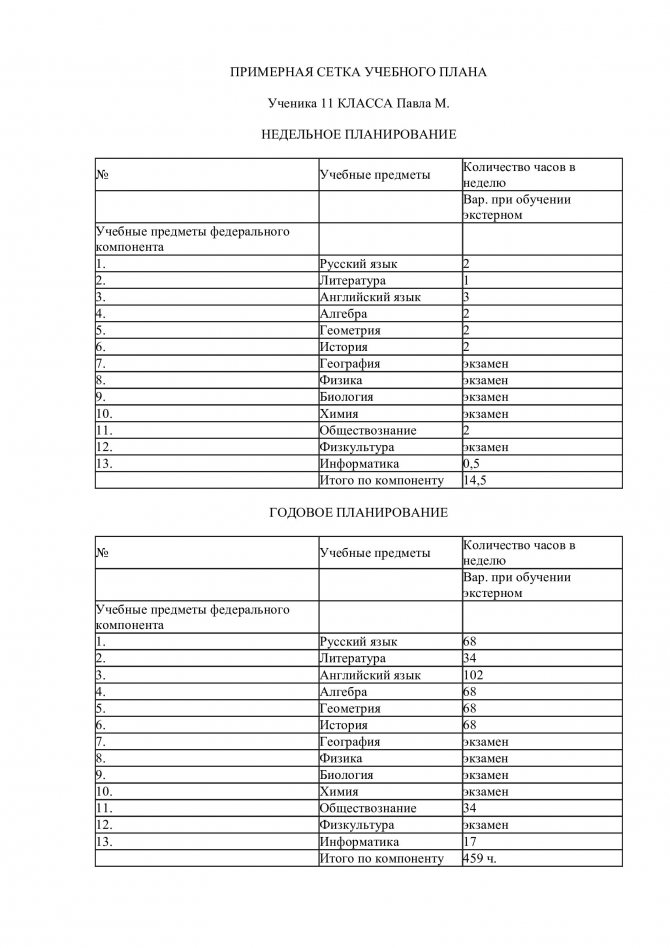
Features when eliminating academic debt
The transition to the IEP is an opportunity not to leave the child for the second year, but to conditionally transfer him to the next grade. In this case, an individual curriculum for academic debt is drawn up so that the student improves in problematic subjects, passes the debt and continues his studies.
How to register the transition to an IEP
The order of training according to the IEP is determined by the school. Not every school has the capabilities (free classes, staffed teaching staff) to organize it. But even in this case, any school must provide the opportunity to eliminate academic debt by switching to an IEP. The opportunity to study at school according to an individual curriculum is prescribed in the local regulations of the school. The regulations on the IEP are reviewed and adopted by the school’s pedagogical council, after which they are approved by order of the director.
We will provide a step-by-step procedure for transitioning to school.
Step 1. Parents write an application addressed to the school principal with a request to transfer to education under the IEP. In high school, the application is written by the student himself. The application indicates the period for which the IUP is required.
Sample application form for transfer

Step 2. The head teacher, together with the teaching staff, prepares an IEP. The plan is approved and its validity period is indicated. The schedule of classes and consultations will be agreed upon with parents.
Step 3. Parents enter into an IEP training agreement with the school.
Step 4. The school director issues an order to transfer the child to an IEP. The child is educated according to an individual plan, is enrolled in this school and is subject to all its rules.
Sample order
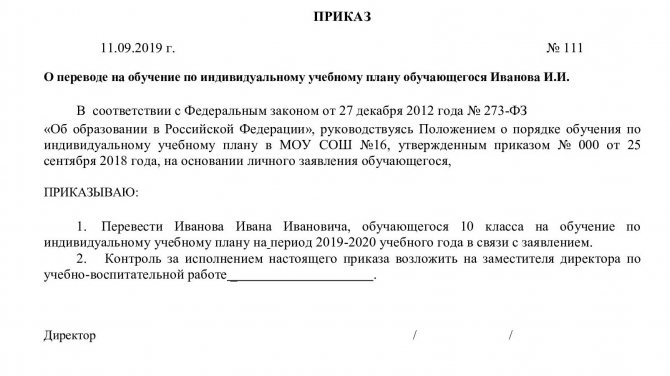
Step 5. Information about the student is entered into the training log according to the IEP.
December, January, February (2nd period of study)
Lexical topics: “Clothes”, “Shoes”, “Winter”, “New Year”, “Winter fun”, “Winter clothes”, “Wild animals”.
Corrective tasks:
a) Formation of vocabulary and grammatical structure of speech:
• continue to form and consolidate previously studied grammatical categories;
• develop an understanding and practical use of singular forms of nouns in the genitive and accusative cases with prepositions and in the prepositional case;
• to form an understanding and practical mastery of the prepositions U, NA, V, IZ.
b) Development of coherent speech:
• continue to develop and strengthen the skills of writing sentences and simple descriptive stories;
• teach the skills of retelling stories and fairy tales “The Three Bears”, “Kolobok” using questions and a picture plan;
• continue to develop dialogical speech skills in the process of developing communication in preschoolers.
c) Development of cognitive processes:
• color (blue);
• continue the work started in the first period;
• form a serial series “big, smaller, small”, “small, bigger, big”;
• form temporary ideas (winter).
d) Formation of phonemic perception and sound pronunciation:
• continue the work started in the first period;
• introduce the sounds “I”, “O”, “E”;
• learn to perceive by ear and correctly reproduce the simple syllabic structure of words.
